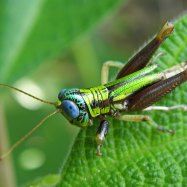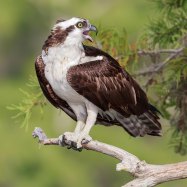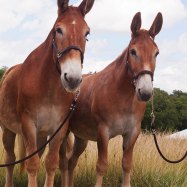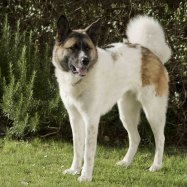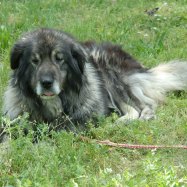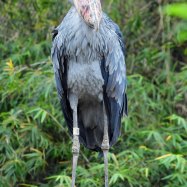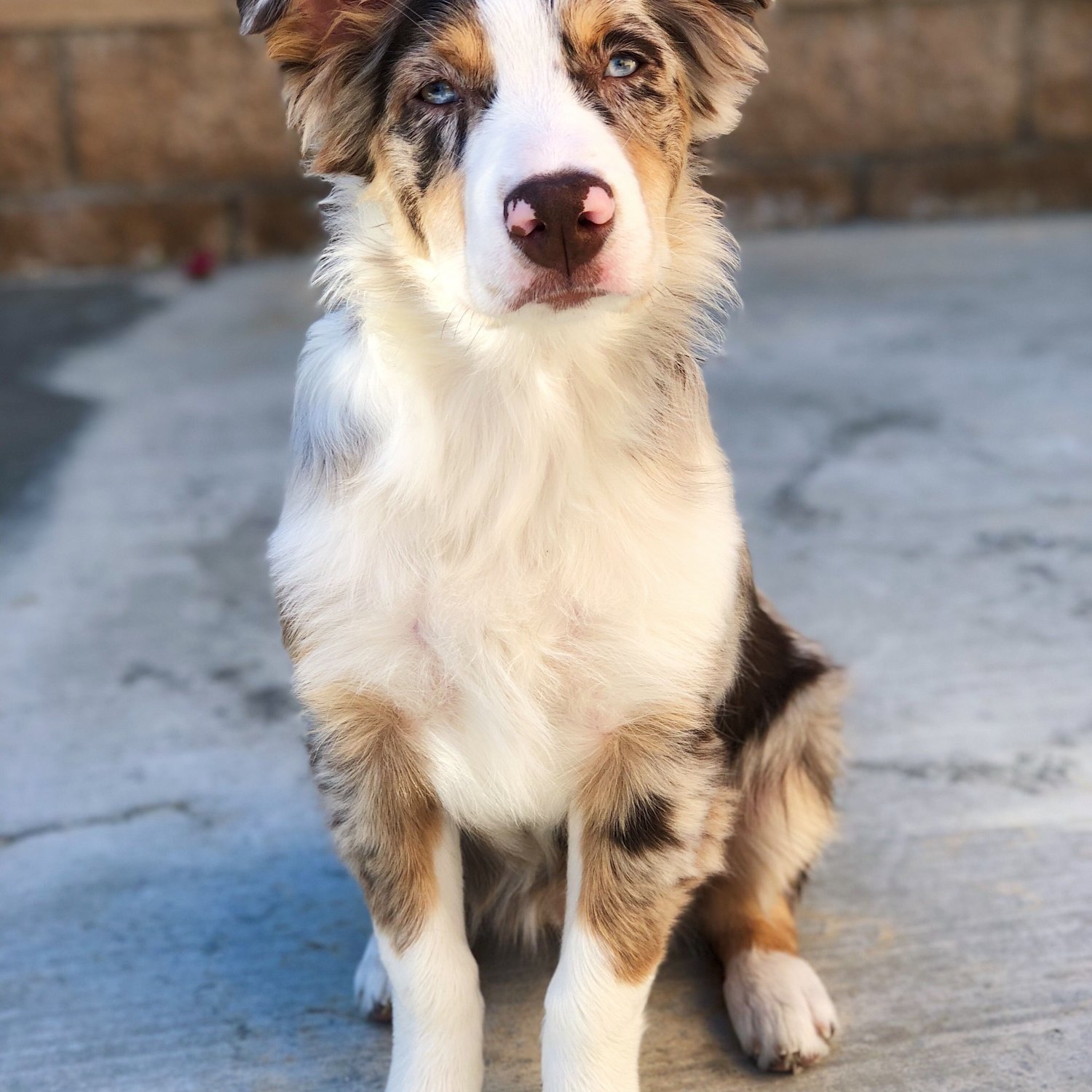
Australian Shepherd
18-23 inches
Looking for a versatile and highly intelligent canine companion? Look no further than the Australian Shepherd. With a medium-sized, muscular build and a length of 18-23 inches, these dogs are perfect for active families. Originally bred in North America, this breed belongs to the Canidae family, making them excellent hunting and herding dogs. Give an Aussie a home and watch them thrive!
Animal Details Summary:
Common Name: Australian Shepherd
Kingdom: Animalia
Habitat: Various habitats including farms, ranches, and suburban areas
The Versatile and Intelligent Australian Shepherd: A Breeding Mix of Colors and Capabilities
Have you ever met a dog that had the perfect balance of intelligence, athleticism, and loyalty? If you're a dog lover, the answer is most likely a resounding yes. But if you're looking for a new furry companion that ticks all these boxes, look no further than the Australian Shepherd.Known for their impeccable work ethic, stunning color variations, and versatile abilities, the Australian Shepherd has captured the hearts of dog lovers all around the world. So let's dive deeper into the world of this fascinating canine breed and discover what makes them stand out from the rest Australian Shepherd.
Scientifically known as Canis lupus familiaris, the Australian Shepherd is a descendant of the domesticated wolf and was officially recognized as a canine breed in 1993. But don't let their name fool you, these intelligent dogs did not originate from Australia as their name suggests. In fact, they were first bred in the United States and have an interesting history that dates back to the 19th century.
The Origin Story of the Australian Shepherd
Contrary to their name, the Australian Shepherd was first bred in the United States, specifically in the western states of America. During the 1800s, a large number of immigrants from Australia arrived in North America with their hardworking sheep herding dogs. These dogs were highly skilled and were used by sheep farmers to herd and protect their livestock.The American ranchers were fascinated by the capabilities of these Australian dogs and began crossbreeding them with the local stock dogs. This breeding mix resulted in a highly intelligent, versatile, and loyal canine that was perfectly suited for the harsh and demanding conditions of the American West.
Eventually, this new breed of dog was recognized, and in 1993, the Australian Shepherd was officially recognized by the American Kennel Club (AKC) Australian Firehawk.
The Features and Characteristics that Set the Australian Shepherd Apart
One look at an Australian Shepherd, and you'll be mesmerized by their striking coat of different colors, such as black, blue merle, red, and red merle. But their coloration is just one of the many features that make them stand out from the rest of the canine kingdom. Here are some other notable traits that have earned the Australian Shepherd a spot as one of the most popular dog breeds in the world.Athletic and Muscular Build
While the Australian Shepherd may look like a fluffy and cuddly dog, their medium-sized, muscular build tells a different story. These dogs were bred to be strong and agile, making them perfect for herding livestock and working alongside their human companions. Their strong physique also makes them ideal for high-intensity activities such as agility training, obedience competitions, and even search and rescue missions.
Intelligence and Trainability
They say that a dog is a man's best friend, but the Australian Shepherd takes this title to a whole new level. These highly intelligent and trainable dogs are quick learners and thrive on mental stimulation. In fact, they're so eager to learn new things that they often excel at various tasks and are often ranked among the top 10 most intelligent dog breeds in the world.
If you have an Australian Shepherd as a pet, it's essential to keep them mentally stimulated with various activities such as training exercises, puzzle games, and interactive playtime.
Loyal and Affectionate
The Australian Shepherd is known for its unwavering loyalty and affection towards their human companions. They bond closely with their family and are always eager to please, making them perfect for families and individuals alike. They also make great watchdogs, as their protective nature kicks in when they sense any potential danger.
Versatile Abilities
One of the most impressive features of the Australian Shepherd is their ability to adapt to various environments and tasks. Whether it's herding sheep, competing in sports, or simply being a loving and devoted companion, these dogs can do it all. This is why they are a popular choice for farmers, ranchers, and families who are looking for a hardworking and versatile dog.
Australian Shepherds around the World
Thanks to their versatile abilities, Australian Shepherds can be found in homes and ranches all around the world. But their love for working and being active makes them truly shine in certain countries.In their country of origin, the United States, Australian Shepherds are still widely used for herding and farm work. In addition, they also excel in various dog sports and competitions, and many have earned titles in obedience, agility, and tracking events.
In countries like Canada, Australia, and Japan, Australian Shepherds are also highly regarded for their intelligence, athleticism, and beauty. They have also gained popularity in countries like Germany, the UK, and France, where they are often used as therapy dogs and participate in canine-assisted therapy programs.
Finding Your Perfect Companion: A Guide for Prospective Australian Shepherd Owners
If you're considering welcoming an Australian Shepherd into your home, there are a few things you should keep in mind to provide them with the best possible care.Habitat and Feeding Needs
Australian Shepherds are highly adaptable and can thrive in a variety of environments. However, due to their herding instincts, they tend to do well in homes with ample space and an active lifestyle. They also require a balanced diet with high-quality protein to maintain their muscular build and energy levels.
Grooming and Care
The Australian Shepherd's beautiful and thick coat requires regular grooming to keep it healthy and shiny. They typically shed their coat twice a year, and during that time, some extra brushing may be required. As with all dogs, regular check-ups with a veterinarian are essential for maintaining their overall health and well-being.
Training and Socialization
As mentioned earlier, Australian Shepherds are highly intelligent and thrive on mental stimulation. This makes them easy to train, but it's essential to start training and socialization early on to ensure proper behavior and obedience. Positive reinforcement techniques work best with these dogs, and they respond well to praise and treats.
In Conclusion
The Australian Shepherd is a perfect blend of intelligence, athleticism, and loyalty, making them an ideal companion for individuals and families alike. Their origin story and versatile abilities make them truly unique, and their striking color variations are just the cherry on top of an already perfect package. While they may have been bred for herding and working, they have quickly become beloved pets all around the world.So whether you're looking for an adventure buddy, a loyal companion, or a hardworking farm dog, the Australian Shepherd is guaranteed to exceed your expectations and capture your heart. But fair warning, once you meet an Australian Shepherd, you may never want any other breed of dog.

Australian Shepherd
Animal Details Australian Shepherd - Scientific Name: Canis lupus familiaris
- Category: Animals A
- Scientific Name: Canis lupus familiaris
- Common Name: Australian Shepherd
- Kingdom: Animalia
- Phylum: Chordata
- Class: Mammalia
- Order: Carnivora
- Family: Canidae
- Habitat: Various habitats including farms, ranches, and suburban areas
- Feeding Method: Carnivorous
- Geographical Distribution: Worldwide
- Country of Origin: United States
- Location: North America
- Animal Coloration: Varies, but commonly seen in black, blue merle, red, and red merle
- Body Shape: Medium-sized, muscular build
- Length: 18-23 inches

Australian Shepherd
- Adult Size: 40-65 pounds
- Average Lifespan: 12-15 years
- Reproduction: Sexual
- Reproductive Behavior: Seasonal breeding
- Sound or Call: Bark, howl
- Migration Pattern: Non-migratory
- Social Groups: Highly social, often form strong bonds with their owners
- Behavior: Intelligent, energetic, and agile
- Threats: Obesity, certain health issues
- Conservation Status: Not applicable (domesticated breed)
- Impact on Ecosystem: Not applicable (domesticated breed)
- Human Use: Companion, herding and working dog
- Distinctive Features: Characteristic coat patterns and eye colors
- Interesting Facts: Despite their name, Australian Shepherds were developed in the United States and have no direct connection to Australia.
- Predator: No natural predators

Canis lupus familiaris
The Brilliant Breed: A Closer Look at the Australian Shepherd
Australia is known for its unique wildlife, from kangaroos to koalas. But did you know that one of the most beloved breeds in the United States has a connection to the land down under? Meet the Australian Shepherd, a highly intelligent and versatile dog that has captured the hearts of many pet owners. In this article, we will dive deeper into the fascinating world of Australian Shepherds and uncover what makes them stand out from other dog breeds.Adult Size and Lifespan
Australian Shepherds are medium-sized dogs, typically weighing between 40-65 pounds PeaceOfAnimals.Com. They have a sturdy and muscular build, making them agile and quick on their feet. Due to their energetic nature, it is crucial for owners to provide them with plenty of exercise to maintain their physical and mental well-being.
On average, Australian Shepherds have a lifespan of 12-15 years. With proper care and nutrition, they can live a long and healthy life. However, like any other breed, they are susceptible to certain health issues, so regular check-ups with a veterinarian are essential to catch any potential problems early on.
Reproduction and Reproductive Behavior
As domesticated breeds, Australian Shepherds reproduce sexually. They typically have two seasons per year, with the female going into heat every six to eight months. It is important for owners to closely monitor their female dogs during this time as they can become agitated and difficult to handle.
Seasonal breeding is a natural instinct for Australian Shepherds, as they were initially bred for herding and working purposes Aye Aye. This reproductive behavior also helps in regulating the breed's population, preventing over-breeding, and ensuring healthy litters.
Sound or Call, Migration Pattern, and Social Groups
Australian Shepherds have a distinct sound or call, which is their bark and howl. Like most dogs, they use barking as a form of communication, whether it's to express happiness, alert their owners of potential danger, or demand attention. However, excessive barking can be a sign of underlying issues, so proper training is necessary to control this behavior.
Unlike wild animals, Australian Shepherds are non-migratory. They are domesticated pets, and as such, do not have a natural migration pattern. However, owners may occasionally notice their dogs wandering off on their own, which can be a cause for concern. This behavior is typical of intelligent breeds like Australian Shepherds, who need constant stimulation and may tend to explore their surroundings.
Australian Shepherds are highly social animals and thrive in the company of their owners. They form strong bonds with their human companions and enjoy being part of a pack. This makes them excellent family pets, as they can adapt well to different personalities and homes.
Behavior and Threats
Intelligent, energetic, and agile - these are just some of the words that best describe the behavior of Australian Shepherds. As working dogs, they have a natural instinct to herd and guard, making them excellent companions for farmers and ranchers. They also excel in various dog sports such as agility, flyball, and obedience competitions.
However, the high energy levels of Australian Shepherds can also be a cause for concern for some owners. Without proper exercise and mental stimulation, they may exhibit destructive behaviors, such as excessive barking, digging, and chewing. They also need consistent training to keep their minds active and engaged.
One of the biggest threats to Australian Shepherds is obesity. Their high energy levels require a nutrient-dense diet, and excessive weight gain can lead to various health problems, including joint issues, heart disease, and diabetes. Owners must monitor their dog's weight and provide them with a balanced diet and enough exercise to keep them fit and healthy.
Conservation Status and Impact on Ecosystem
As a domesticated breed, Australian Shepherds do not have a conservation status. They are not considered a threatened or endangered species. However, they do have an impact on the ecosystem, specifically in their role as herding and working dogs.
Australian Shepherds have been instrumental in helping farmers and ranchers in managing their livestock. Through their herding skills, they can keep the animals in line, preventing separation or danger to the herd. This natural behavior aids in maintaining the balance in their ecosystems and contributes to the sustainability of the agriculture industry.
Human Use and Distinctive Features
Australian Shepherds have been in the service of humans for centuries. Apart from being a beloved companion, they also have a significant role in working and herding livestock. With their intelligence, agility, and hardworking nature, they have become indispensable to the agricultural sector.
One of the most distinctive features of Australian Shepherds is their beautiful coat patterns and eye colors. They come in a variety of colors, including black, red, blue merle, and red merle. Their coats are medium length, water-resistant, and require minimal grooming. Their eyes are equally impressive, with colors ranging from blue, brown, amber, and even heterochromia (two different-colored eyes).
Interesting Facts
Despite their name, Australian Shepherds have no direct connection to Australia. They were developed in the United States to work as herding dogs, with the first recorded Australian Shepherd being used in California in the late 1800s. Some theories suggest that their name was derived from their role in herding merino sheep, commonly known as the Australian sheep.
Another interesting fact is that Australian Shepherds have no natural predators in the wild. As they are domesticated breeds, they are not a part of the food chain and do not have any natural enemies. However, as responsible pet owners, we must still keep them safe from potential threats in their environment.
In Conclusion
The Australian Shepherd is a brilliant breed, known for their intelligence, agility, and loyalty. They have been a part of our lives for centuries, serving as devoted companions, herding and working dogs, and even therapy pets. They are more than just a breed - they are a part of our family, and we must cherish and take care of them as such.
So next time you come across an Australian Shepherd, remember that they have a unique history, personality, and role in our society. And maybe, just maybe, you'll appreciate them a little bit more.

The Versatile and Intelligent Australian Shepherd: A Breeding Mix of Colors and Capabilities
Disclaimer: The content provided is for informational purposes only. We cannot guarantee the accuracy of the information on this page 100%. All information provided here may change without prior notice.

